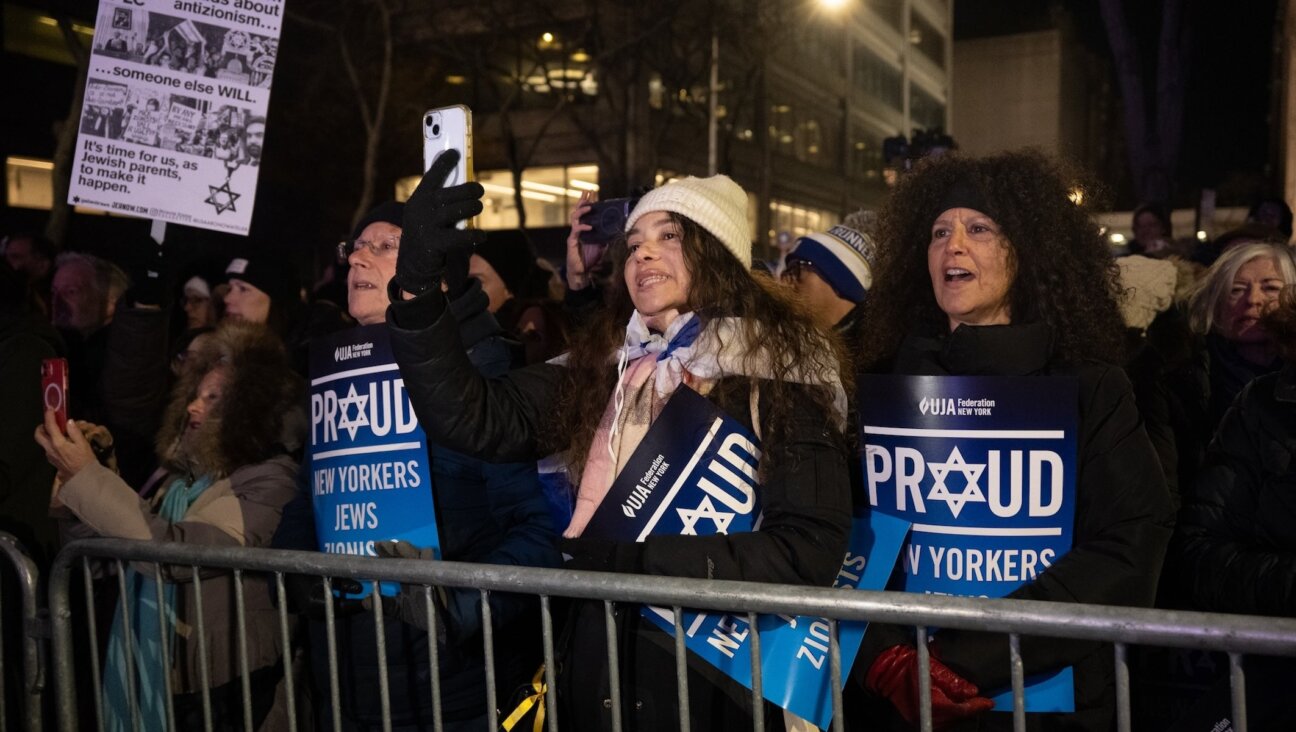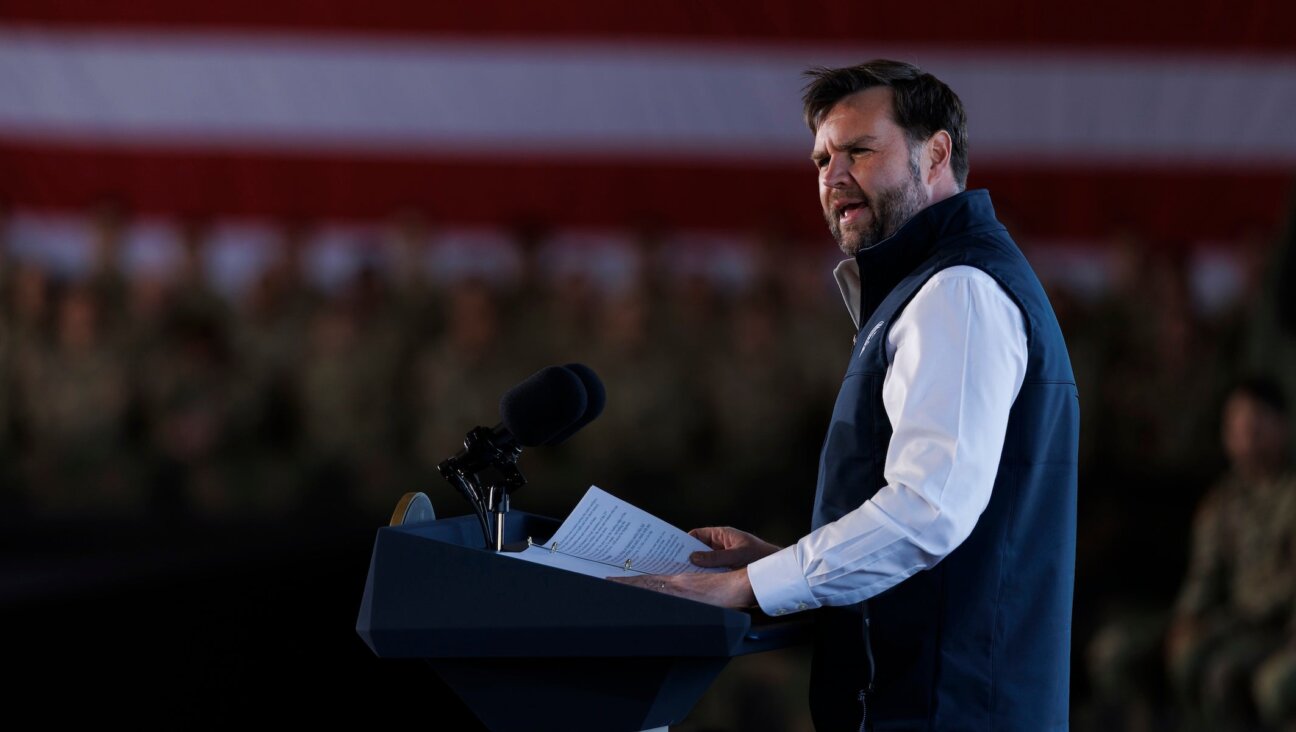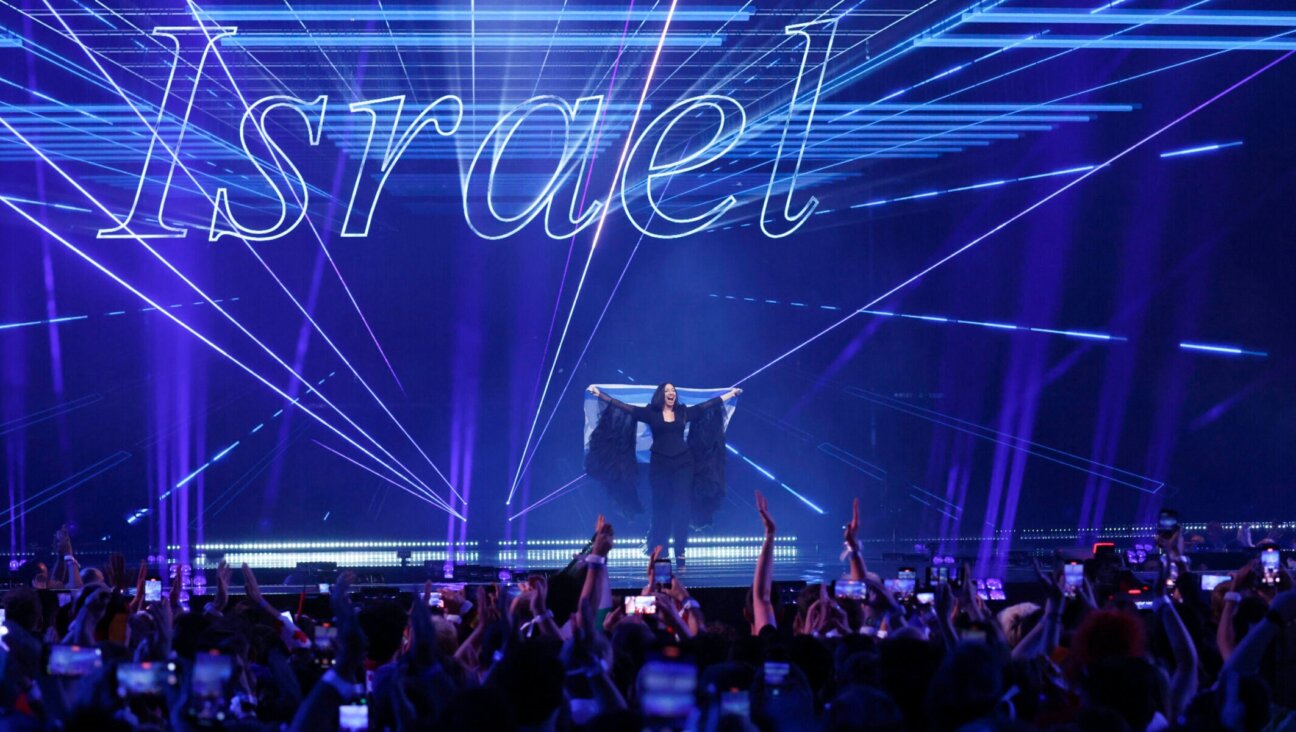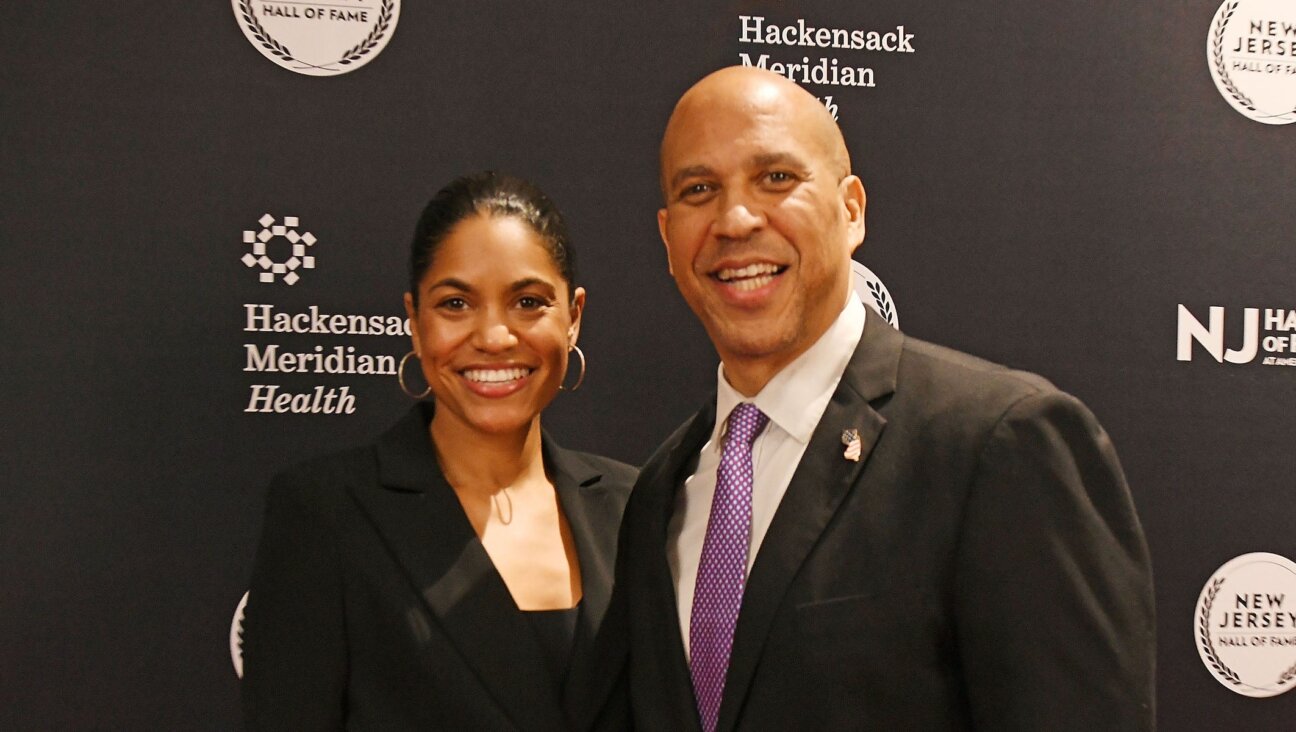Report: Israeli soldiers say they are ordered to shoot at unarmed Gazans seeking aid
Since May 27, there have been at least 19 IDF shooting incidents related to humanitarian aid distribution in Gaza

Palestinians receive aid supplies after aid trucks enter through Netzarim Corridor under Israeli attacks in Gaza Strip on June 26, 2025. Photo by Ali Jadallah/Anadolu via Getty Images
(JTA) — As the death toll of Gazans around aid distribution sites continues to rise, some Israeli soldiers and officers told the newspaper Haaretz that they are ordered to indiscriminately shoot at people seeking aid as a method of dispersal.
According to the report, the Israeli Military Advocate General instructed the IDF General Staff’s Fact-Finding Assessment Mechanism, which investigates potential misconduct, to investigate suspected war crimes at the aid distribution sites during a closed-door meeting.
In a statement shared with the Times of Israel, the IDF confirmed the General Staff Fact-Finding Assessment Mechanism was probing the matter but denied that troops had been ordered by commanders to deliberately open fire on Palestinian aid seekers.
“We strongly reject the accusation raised in the article. The IDF did not instruct the forces to deliberately shoot at civilians, including those approaching the distribution centers. To be clear, IDF directives prohibit deliberate attacks on civilians,” the IDF said.
The controversy is the latest to embroil the Gaza Humanitarian Foundation (GHF), a joint U.S-Israeli mechanism to deliver aid in Gaza and bypass Hamas, which began working late last month. Since May 27, there have been at least 19 IDF shooting incidents related to humanitarian aid distribution.
The new report in the left-leaning newspaper included testimonies from several anonymous IDF soldiers and officers who described a daily operation that opened fire on civilians seeking aid despite them posing no threat.
“It’s a killing field,” one soldier told Haaretz. “Where I was stationed, between one and five people were killed every day. They’re treated like a hostile force — no crowd-control measures, no tear gas — just live fire with everything imaginable: heavy machine guns, grenade launchers, mortars. Then, once the center opens, the shooting stops, and they know they can approach. Our form of communication is gunfire.”
Thousands of Gazans come to GHF’s four aid distribution sites daily as one of the only lifelines for food in the area, but the sites are only open for one hour each morning, and soldiers routinely fire into the crowds before and after they open to disperse them, according to Haaretz.
“We open fire early in the morning if someone tries to get in line from a few hundred meters away, and sometimes we just charge at them from close range. But there’s no danger to the forces,” the anonymous soldier said. “I’m not aware of a single instance of return fire. There’s no enemy, no weapons.”
One anonymous senior officer familiar with the fighting in Gaza told Haaretz that the indiscriminate firing of civilians went against “everything the army is supposed to stand for.”
“The fact that live fire is directed at a civilian population — whether with artillery, tanks, snipers or drones — goes against everything the army is supposed to stand for,” the senior officer said. “Why are people collecting food being killed just because they stepped out of line, or because some commander doesn’t like that they’re cutting in? Why have we reached a point where a teenager is willing to risk his life just to pull a sack of rice off a truck? And that’s who we’re firing artillery at?”
During the meeting of the Israeli Military Advocate General and the IDF General Staff’s Fact-Finding Assessment Mechanism, senior officers in the IDF asserted that the incidents were isolated and that fire was directed at individuals who posed a threat to troops, but representatives of the Advocate General’s Office rejected the IDF’s claims, according to Haaretz.
“The claim that these are isolated cases doesn’t align with incidents in which grenades were dropped from the air and mortars and artillery were fired at civilians,” said one legal official. “This isn’t about a few people being killed — we’re talking about dozens of casualties every day.”
An IDF spokesperson responded to the claims, telling Haaretz that Hamas was the primary hindrance to the successful distribution of aid and that “in depth investigations” were conducted over reports of harm to civilians at distribution centers.
“Hamas is a brutal terrorist organization that starves the Gazan population and endangers them to maintain its rule in the Gaza Strip. Hamas does everything in its power to prevent the successful distribution of food in Gaza and to disrupt humanitarian aid,” the spokesperson said.
“The IDF allows the American civil society organization (GHF) to operate independently and distribute aid to Gaza residents. The IDF operates near the new distribution areas to enable distribution while continuing operational activities in the Strip,” according to the IDF spokesperson.
“As part of their operational conduct in the vicinity of the main access roads to the distribution centers, IDF forces are conducting systematic learning processes to improve their operational response in the area and minimize, as much as possible, potential friction between the population and IDF forces. Recently, forces worked to reorganize the area by placing new fences, signage, opening additional routes, and more. Following incidents where there were reports of harm to civilians arriving at distribution centers, in-depth investigations were conducted, and instructions were given to forces on the ground based on lessons learned. These incidents were referred for examination by the General Staff’s debriefing mechanism,” the spokesperson continued.
On Wednesday, Israeli Prime Minister Benjamin Netanyahu stopped aid from entering northern Gaza for 48 hours amid claims that Hamas had been stealing aid intended for civilians.
In a statement following the publication of the Haaretz report, Netanyahu and Israeli Defense Minister Israel Katz rejected the claims made in the article, referring to it as “blood libel” in a statement.
“The State of Israel absolutely rejects the contemptible blood libels that have been published in the Ha’aretz newspaper, according to which ‘IDF Soldiers Ordered to Shoot Deliberately at Unarmed Gazans Waiting for Humanitarian Aid.’ These are malicious falsehoods designed to defame the IDF, the most moral military in the world,” the statement read.
“The IDF operates in difficult conditions against a terrorist enemy that operates out of a civilian population and hides behind it, using it as human shields, and uses a complete industry of lies to harm the legitimacy of the State of Israel,” the statement continued. “The soldiers of the IDF receive clear orders to avoid harming innocents – and operate accordingly.”
According to a report released Thursday by the British charity Save the Children, based on reporting from the Gaza Media Office and the U.N., children were among the casualties in ten of the 19 aid site shooting incidents.















